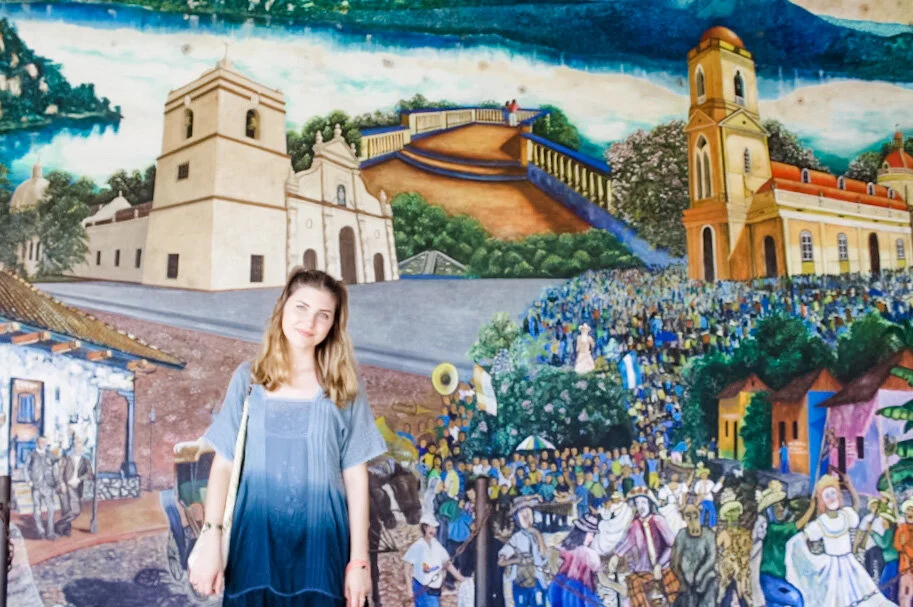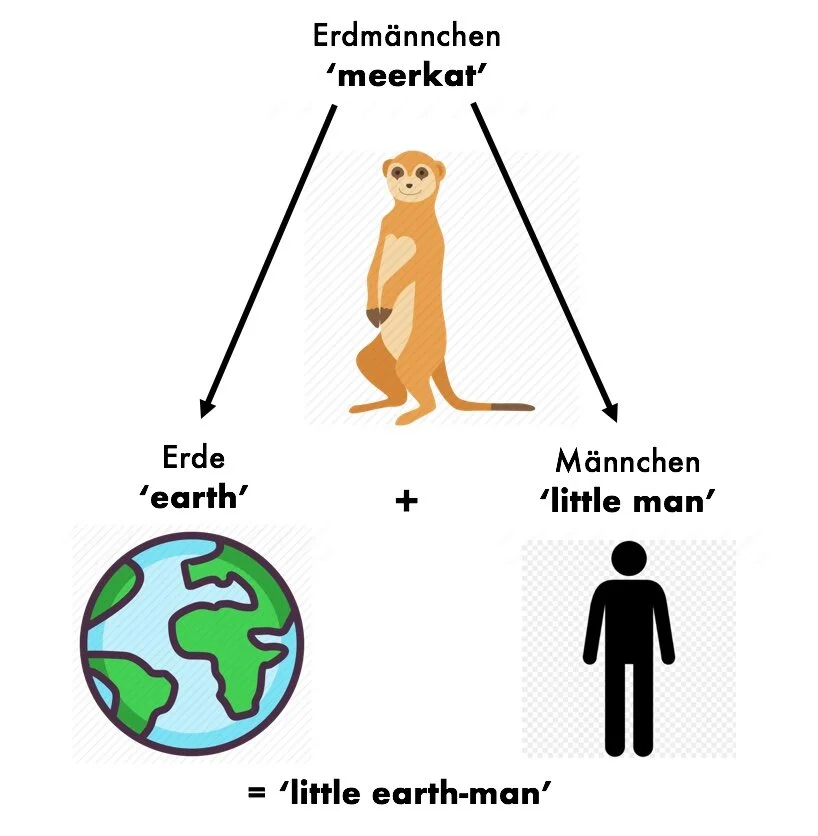Language Learning Made Awesome: Final Project Highlights
Highlights from our students’ awesome final projects this session.
I. Spanish Projects (Proyectos de Español)
By Kendall Mila
Beginner I Spanish Final Project: Mi Vida (My Life)
Two of our amazing students, Lexi and Christina, started taking beginning Spanish classes at LanGo during the Fall I session. They enrolled in private tutoring so that they could not only customize their schedule each week but also take classes together. With strong backgrounds in French, Lexi and Christina quickly mastered new Spanish vocabulary and grammar. They always came to class with a positive attitude and worked hard to build their conversation skills in and outside of class.
For their final projects, Christina and Lexi presented about their lives or vidas. By describing their lives, students can use their knowledge of vocabulary to discuss a topic that they are comfortable and familiar with. Each student had their own approach to presenting the story of their life: Christina incorporated collages about her house, family, hobbies, and trips into her story, and by using only images, she was able to orally present her story in a natural and narrative way which highlighted her speaking skills.
Lexi used another approach with images and text combined to discuss her life as a teacher and the fun activities she does outside of school, like spending time with her family, her passion for hiking, her trips with her friends overseas, and her new hobby of learning a language with her friend Christina. Lexi has a devotion to learning that expands into various aspects of her life.
It has been a pleasure to work with both of these ladies and has been rewarding to watch their language skills bloom and grow. Working with them was a joy and was always fun and exciting!
Beginner II Spanish Project: Cronológica de la Vida (Timeline)
For our more advanced beginner students taking Beginner II Spanish, their final project encompassed working on a timeline of their life, una cronología de su vida. This involved grammar from Beginner I and Beginner II, since students had to discuss both present and past events in their lives. They also had the opportunity to discuss past events using either the preterite or imperfect past tenses in Spanish. Preterite verbs in Spanish refer to one completed action in the past (or a series of completed past actions). Imperfect verbs are used for recurring past actions. Our students did an excellent job of incorporating past and present events into their timelines .
One of our newest students, Joshua, presented his detailed timeline of his life. His presentation discussed his family, pets, school life, his rebellious stage in high school when he was into rock, his time at the university, his vacations, his current job, and his special times in Ecuador. When students like Joshua describe their timelines, it is exciting to see their passion about their lives and to watch them describe it in a new language, which has also become a passion in their life.
Another one of our amazing students, Elizabeth, who has been taking classes since Beginner I during the summer semester, presented a very detailed timeline of her life including descriptions of her family, her first job, her accomplishments in college, and her current career. As with all of Elizabeth’s work, her presentation was detailed, personalized, and interesting. She presented with enthusiasm and excellent pronunciation. As her teacher, I am proud to see her progressing in the language and expressing herself so eloquently. I am proud of everyone who worked so hard on their final projects this fall.
Congrats to our Beginner II Spanish students for completing a learning- and fun-packed session!
II. Chinese Projects
By Tyler Paul Utt
The question of what to choose as an end-of-term project for Beginner II Chinese during Fall I seemed to answer itself, on the very first day of class, no less. Flor (who’s been with LanGo from the very beginning in 2018! Whoo!) asked if we could take a look at the lyrics (by Michael Zheng Jun 郑钧) to the song 流星 Liúxīng (which means ‘meteor’), featured in the 2018 movie Crazy Rich Asians, a romantic comedy about people from different social classes.
Of course I was happy to, and the lyrics featured many beautiful Chinese compound words (for the vocab words we extracted, see here at Tinycards). For instance, the title ‘meteor’ 流星 liúxīng literally means ‘drifting star’; ‘to transform’ 蛻變 tuìbiàn has as its first component 蛻, which refers to the exoskeleton after it has been shed (note the ‘bug’ radical component 虫); and my favorite, the idiom ‘ascend to heaven’, 羽化 yǔhuà, whose literal meaning seems to be ‘to become (化) feathered/winged (羽)’.
Aside from being a talented student of Chinese with an exceptional memory, Flor is a gifted singer, it turns out! You can hear for yourself on the video in our Instagram highlights.
流星 Liúxīng (‘Meteor’), featured in the 2018 movie Crazy Rich Asians.
(Of course her aptitude has no bearing on the grade she received.) One area of pronunciation that we focused on a lot this term was the distinction between two classes of consonant sounds: fricatives (especially those hissing, buzzing, and shushing sounds), as opposed to affricates (which have a complex articulation of a stop + a fricative component; English examples include the [ts] in pizza and the [ʧ] in church). Mandarin Chinese has no fewer than four fricatives made with the tip of the tongue (in Pinyin, x sh r s) and six affricates (j q zh ch z c)--an unusually high number. On this difficult point, as well as the all-important matter of distinguishing and producing tones, Flor has shown tremendous improvement this term, and we look forward to her continued progress and improvement in next term’s Beginner III Chinese class!
III. Japanese Projects
I’ve been told that, of all the languages in use today that have a standard written form, Japanese is the hardest for speakers of English to acquire, and I’m inclined to believe it. While the sound system (the set and interactions of vowels and consonants) and inflection of Japanese are relatively uncomplicated, Standard Japanese uses no fewer than three distinct writing systems!
The first two that the learner must master are called Kana, and they encode syllables (more accurately, each sign writes a mora or rhythmic ‘beat’), and there are 46 signs in each set (for a total of 92, versus 26 letters in the English alphabet). See the table below for the 5 vowel signs in each of these systems as well as ‘Rōmaji’ (the Roman alphabet).
Table 1. Five vowel signs in Rōmaji, Hiragana, and Katakana.
As you can see, the Hiragana characters feature lots of fluid curves, while Katakana shapes are more rigid and angular. Then there are the famous Kanji…thousands upon thousands of them. The term Kanji simply means ‘Chinese character’, and the writing system was imported from China to Japan many centuries ago. Some characters are very simple in structure and are still recognizable as clear, simple depictions of animals and objects, while most are abstract combinations of simpler elements.
The image above is a writing sample by Angelia, our student in Japanese at LanGo, on the last day of class in Fall I. Dear readers, I will forgive you for doubting me when I tell you that Angelia has been studying Japanese at LanGo for 4 months, before which she had no knowledge of the language. Her progress is nothing short of incredible. She has not only gained great fluency in reading and writing both Hiragana and Katakana, but shows great aptitude for writing and remembering Kanji. She also understands when it is appropriate to use Katakana rather than Hiragana.
The text is from a series of beginner-level graded readers, which include audio for each book in the series. In the final lesson, we listened to a brief story about everyday life in the Kimura family. Each sentence was played back 2-3 times from the recording, and I would repeat words and phrases more slowly as needed. After a sentence had been fully transcribed and checked for spelling and accuracy, Angelia, Levi (LanGo intern and adept co-learner of Japanese) and I would work out the meaning and discuss various grammatical points. At this early stage of study, I only ask that students use the simple Kana when taking dictation, but Angelia showed great initiative in not just remembering the right Kanji, but the proper stroke order too (an important part of forminggetting one’s accurate Kanji to look right characters). Anji-san had clearly putput in the time into studying vocabulary outside of class. (Yyou can find our study materials here).
In conclusion, I’d like to draw your attention once more to the image of Angelia’s writing above. Note how aesthetically pleasing the overall effect is, and how well ordered the composition. I have found that writing Chinese and Japanese, much more than writing other languages, demands our careful attention and cultivates the writer’s artistic eye. Writing these languages well involves honing our sensibilities, and in this regard, Angelia is especially advanced, already at this early stage. We hope she can rejoin us at LanGo soon to continue her studies of this challenging and rewarding language.
IV. Korean Projects (한국어 프로젝트)
By Lisa Jeon Ox
Beginner I Korean Final Project: Self-Introductions (자기소개)
In the Beginner I Korean class, students learned and practiced how to read and write with the Korean alphabet, Hangeul (한글). They also learned all the basics of Korean pronunciation and how sentences work, as well as hundreds of must-know beginner vocabulary words. Building on these basic skills, they acquired conversational skills for a variety of situations, including greetings and self-introductions, asking questions, describing people and things, counting and shopping, talking about their likes and dislikes, ordering at a restaurant, asking for and giving directions, and telling short stories.
Beginner I Korean student, Wendali, demonstrating her Hangeul skills.
For their final project, our Beginner I Korean students put this knowledge into action by writing and presenting short self-introductions (자기소개) that included their (Korean) names, hometowns and current cities, occupations, and most and least favorite activities. Great job to our group of beginner K-students! We look forward to continuing to work with this group as they advance to the Beginner II Korean level. Fighting! (하이팅!)
Intermediate I Korean Final Project: City Guides (도시 안내)
In the Intermediate I Korean class, students learned and practiced more advanced vocabulary, grammar, and conversational skills based on six themes:
weather and seasons 날씨와 계절
clothing and fashion 옷과 유행
(public) transportation (대중) 교통
travel and culture 여행과 문화
sports and leisure activities 스포츠와 여가 활동
food and shopping 음식과 쇼핑
For their final project, they put all of this learning together to create city guides (도시 안내) about the city of their choice. City choices included St. Louis (USA), Milan (Italy), and Virginia (USA). You can check out clips of the awesome presentations in our Instagram stories at www.instagram.com/langoinstitute.
Congratulations to our Intermediate I K-students! 화이팅!
We are so proud of our intermediate K-students for mastering lots of advanced Korean vocabulary and grammar, speaking in the immersion setting, and putting all their knowledge together to present about their favorite cities this session! 너무 자랑스러워요!










































Tools for helping you master some of the trickier points of German grammar, whether you’re learning it for the first time or wanting to review the fundamentals. Los geht’s!